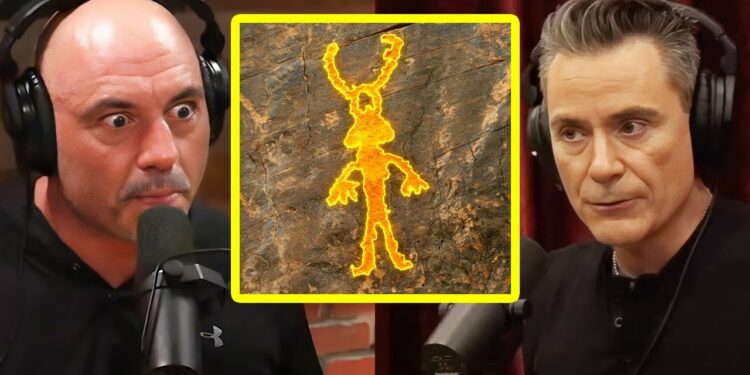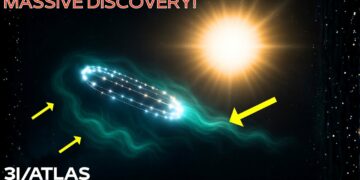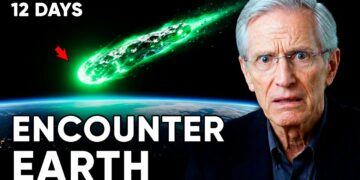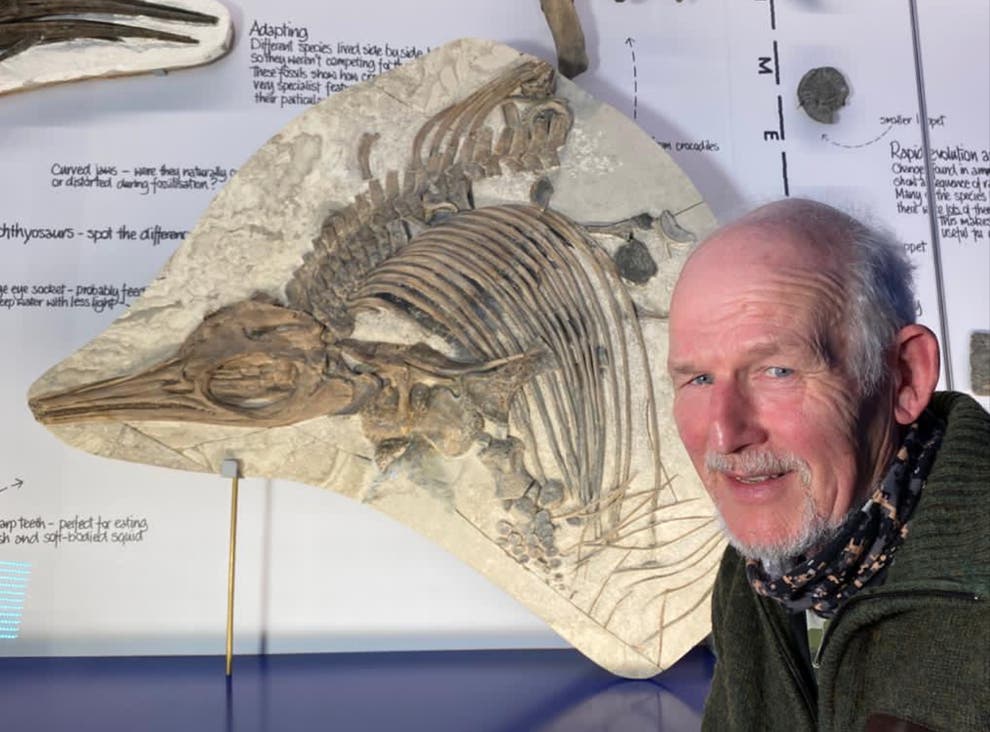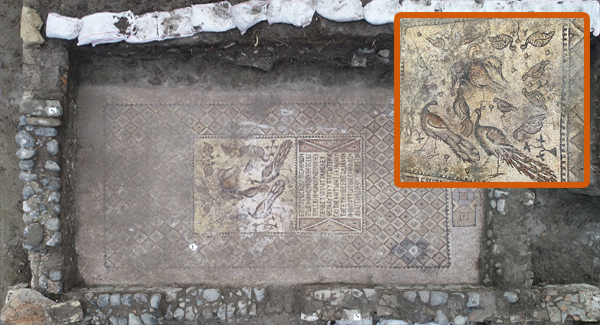The Grand Canyon is a place of wild mysteries that boggle the mind. Certain areas are off-limits—no hiking, no flying over, and definitely no flying below the rim. Yet, in these forbidden zones, strange things happen. White planes and black helicopters appear out of nowhere, as if guarding something secret. I’ve shown footage of these helicopters in my episode—they’re real, and they’re not just patrolling for safety. The idea that these areas are restricted because they’re “dangerous” doesn’t hold up. You can visit plenty of hazardous spots in the canyon with just a warning to be careful. People fall—about two a year, like the influencer who recently slipped while taking a selfie. But there’s more to it than slippery edges.
There are wild stories about hidden caverns in the Grand Canyon containing Egyptian-like artifacts, hieroglyphics, and even a deserted underground city. Back in 1903, an explorer named G.E. Kincaid, according to the Phoenix Gazette, stumbled upon man-made steps leading to a cave while searching for gold deposits, just before Teddy Roosevelt turned the canyon into a national preserve. Inside, he found hieroglyphics that resembled Egyptian ones but weren’t quite the same, a Buddha-like statue, and a stash of weapons, shields, and gold. He described a sprawling network of tunnels and caverns, like an abandoned city carved into the rock. Kincaid returned to town, rallied a group for a follow-up expedition, but then vanished, and the trip never happened. The story faded into obscurity.
Adding to the intrigue, the region around the Grand Canyon has ties to sandstone, the same material used in Egypt’s pyramids. Ohio, known as the sandstone capital of the world, shipped out 21 times the amount of sandstone used in the Great Pyramid between 1800 and 1980 to build structures worldwide. Could there be a connection? The Smithsonian published details about these alleged Egyptian finds in 1909, but skeptics dismiss it as early 20th-century clickbait. The artifacts didn’t match Native American origins, instead showing Egyptian or even Tibetan influences, raising questions about an ancient civilization in the Americas. How could Egyptians have gotten here? Some say it’s not impossible—people crossed oceans on flimsy boats, and Cuba’s diverse population hints at complex migration patterns, possibly beyond the known slave routes.
The Caribbean, including Cuba, has deep African roots, yet its history is murky, pieced together from artifacts and journals. Primary accounts from Christopher Columbus’s crew mention encountering Africans in the Americas, described with a mix of curiosity and disappointment. These records suggest a more complicated history than the standard narrative of Native Americans descending solely from Ice Age migrants via the Bering Strait.
Then there’s the Olmec civilization, predating the Aztecs and Maya in Central America. Known as the “rubber people” by the Aztecs, they built massive stone heads, some weighing 20-25 tons, with features that don’t align with typical Native American traits—some say they resemble Polynesian or African faces. Genetic studies complicate things further, showing modern Native Americans share DNA with these groups, suggesting ancient migrations were far more intricate than previously thought. The Olmecs also left behind images of feathered serpents, like Quetzalcoatl, and curious artifacts, such as a figure holding a bag identical to ones found in ancient Sumer and at Göbekli Tepe, hinting at a shared cultural thread across continents.
The restricted zones of the Grand Canyon fuel speculation. Why are they off-limits? Hikers and rafters who’ve tried to explore these areas report being chased off by black helicopters or arrested. One group found a massive hook anchored into the ground, possibly for rappelling, and artifacts from the early 1900s, suggesting someone was there long ago. The official explanation—safety concerns—feels flimsy when you consider the military-like response. Is it a secret government installation? Hidden treasure? Or something tied to Kincaid’s lost city? The Smithsonian, exempt from laws requiring the return of Native American artifacts, holds millions of items out of public view, adding to the suspicion they’re hiding something big.
The Amazon offers another layer of mystery. Spanning 7 million square kilometers, with 5.5 million still covered in dense, unstudied rainforest, it’s like an archaeological blank spot the size of India. Spanish explorer Francisco de Orellana, in 1541-1542, reported thriving cities along the Amazon River, yet later explorers found nothing but jungle. Recent deforestation has revealed massive cities, geometric earthworks, and a man-made soil called terra preta, rich in microbes, that allowed millions to flourish in a region thought inhospitable. These discoveries, aided by LIDAR technology, show precise alignments to true north and complex structures, pointing to advanced astronomical and engineering skills.
The Grand Canyon’s restricted zones, Egyptian-like finds, and the Amazon’s lost cities all challenge the conventional timeline of human history. Add to that the “Great Unconformity”—a billion years of missing rock layers in the canyon, likely swept away during the breakup of the supercontinent Rodinia 700 million years ago—and you get a sense of how much we still don’t know. The canyon’s rocks, some 1.75 billion years old, hold clues to Earth’s ancient past, yet gaps in the record keep secrets locked away.
Then there’s the paranormal angle. Since the 1950s, reports of UFOs and strange lights have swirled around the canyon’s isolated areas. Dr. Elizabeth Carter led a team of researchers who found cave engravings depicting extraterrestrial beings and advanced technology, along with abnormal energy readings. Conspiracy theorists link these to Area 51 or even a portal to another dimension. The Hopi Indians have legends of an underworld in the canyon, where their ancestors lived until a schism led them to climb out through a tree piercing the underworld’s roof. They still await a messenger who will restore their ancient lands.
The Grand Canyon, with its 278 miles of stunning vistas, draws 5 million tourists annually, but it’s also a graveyard. The Pioneer Cemetery holds nearly 400 graves, including victims of a 1956 mid-air collision that killed 128 people. About 12 deaths occur yearly, mostly from plane crashes, falls, or environmental hazards like dehydration. In 2022, 11 people died, including a rafter who drowned and a hiker who succumbed to heat on the Bright Angel Trail. Only 335 of an estimated 1,000 caves have been documented, with just one open to visitors.
The canyon’s mysteries—geological, archaeological, and paranormal—remind us how little we know about our planet’s past. Whether it’s lost civilizations, alien visitors, or hidden government operations, the Grand Canyon holds secrets we’re only beginning to uncover. It’s a testament to the unknown, waiting for those bold enough to explore it.

